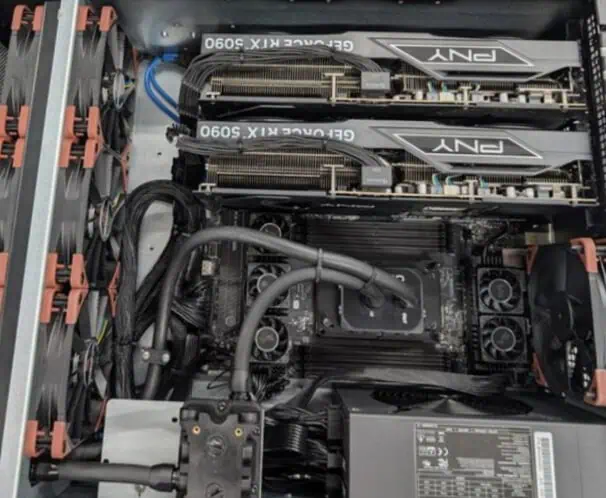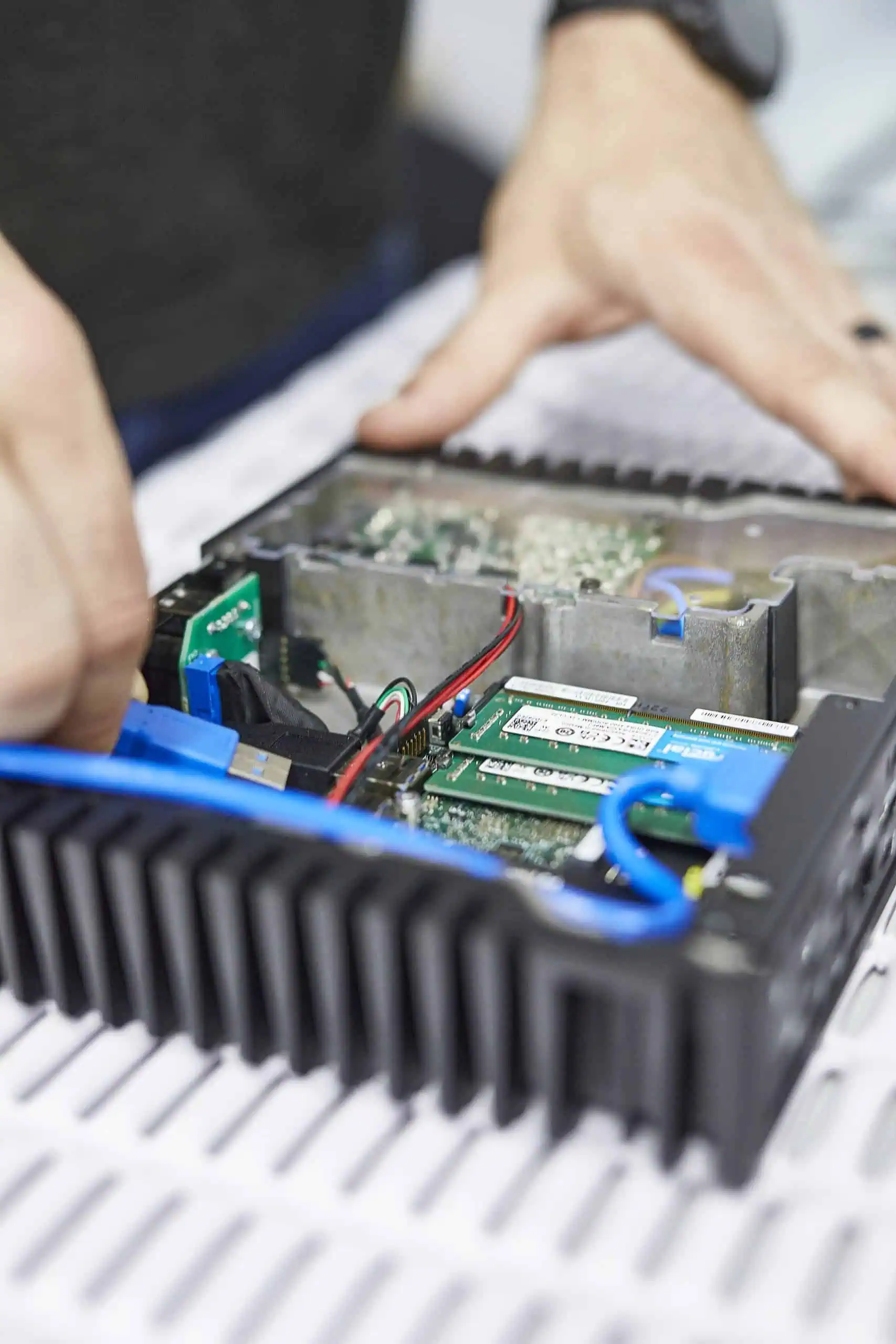In today’s highly competitive tech landscape, power efficiency and performance are paramount, especially for data centre managers, users of high-performance workstations and anyone with concerns about power consumption. With AMD’s groundbreaking 3D V-Cache technology the Ryzen 9 7900X3D offers a compelling option for system builders. Here we’re going to delve deep into the nuances of the 7900X and 7900X3D processors, comparing their performance and power consumption to understand the real-world benefits of 3D V-Cache.
Understanding the Basics
| Ryzen 9 7900X | Ryzen 9 7900X3D | ||||||||||||
| Cores | 12 | 12 | |||||||||||
| Threads | 24 | 24 | |||||||||||
| Base Clock | 4.7 GHz | 4.4 GHz | |||||||||||
| Boost Speed | 5.6 GHz | 5.6 GHz | |||||||||||
| Cache | 64 MB | 128 MB | |||||||||||
| TDP | 170 W | 120 W | |||||||||||
Both CPUs share the same core architecture and boast impressive specifications. However, the two stand apart in terms of power consumption this is primarily because of cache configuration. 3D V-Cache while being faster than its 2D counterpart is more volatile and calls for a lower frequency clock speed to ensure stable operation. Will this trade-off be worth it when it comes to our test workloads?
Performance Analysis
When it comes to raw performance, both the Ryzen 9 7900X and 7900X3D deliver near-identical results. The 7900X has a slight edge in base clock speed with its 4.7 GHz compared to the 7900X3D’s 4.4 GHz. However, both processors share the same boost speed at 5.6 GHz.
User Benchmark metrics indicate:
- Ryzen 9 7900X: Effective Speed – 117%
- Ryzen 9 7900X3D: Effective Speed – 116%
Single-core and multi-core speed tests exhibit marginal differences:
- Single Core Speed: 7900X – 207 Pts, 7900X3D – 219 Pts
- Multi Core Speed (OC): 7900X – 2812 Pts, 7900X3D – 2977 Pts
These insights suggest both CPUs are highly competent in handling intensive workloads, making them suitable for demanding environments.
Power Efficiency
One of the most significant differentiators between the two CPUs is power consumption. The 7900X3D operates with a lower TDP of 120W compared to the 7900X’s 170W. This difference translates into several key benefits:
- Reduced Electricity Bills: Lower power consumption means reduced operational costs, which is crucial for data centre managers and IT departments focused on budget optimisation.
- Cooler and Quieter Operations: The 7900X3D’s lower power consumption leads to less heat generation, which in turn demands less cooling effort, resulting in quieter operations. This is particularly beneficial for maintaining a conducive work environment.
- Longevity: Reduced thermal stress on components typically results in longer hardware lifespan, offering better ROI over time.
3D V-Cache Technology
The 7900X3D leverages AMD’s innovative 3D V-Cache technology, which stacks additional cache memory on top of the CPU die, effectively doubling its cache size to 128MB. This substantial increase in cache memory enhances data retrieval times and overall CPU efficiency. The 3D V-Cache technology allows the processor to run at a lower TDP while still delivering high performance, making it a game-changer for energy-efficient computing.
Real-World Applications
Where power efficiency and thermal management are critical, the 7900X3D stands out as a superior choice. Its lower power consumption does not compromise performance, making it ideal for environments that require 24/7 uptime and optimal thermal conditions.
For workstation users who need high performance without the constraints of power consumption and thermal output, the 7900X offers a slightly higher base clock speed, making it suitable for tasks that demand consistent high-frequency performance.
Conclusion
In the battle of Ryzen 7900X vs 7900X3D, the choice largely depends on your specific needs. If power efficiency, cooler operations, and long-term cost savings are your priorities, the Ryzen 9 7900X3D is the clear winner. Its innovative 3D V-Cache technology and lower TDP make it an excellent choice for power-conscious environments.
On the other hand, if you need the absolute highest base clock speed for specific workloads and can manage higher power consumption, the Ryzen 9 7900X remains a formidable option.
At G2 Digital, we are committed to providing cutting-edge technology solutions that cater to the diverse needs of our clients. Our 1U PCs, equipped with these powerful Ryzen CPUs, offer unparalleled performance and efficiency, making them ideal for various industrial and commercial applications.
Ready to experience the future of efficient computing? Explore our 1U PC with Ryzen 7900X3D or 1U PC with Ryzen 7900X today and make an informed decision that best suits your operational needs.
For more information, visit G2 Digital and take the first step towards enhancing your data centre or workstation efficiency.








